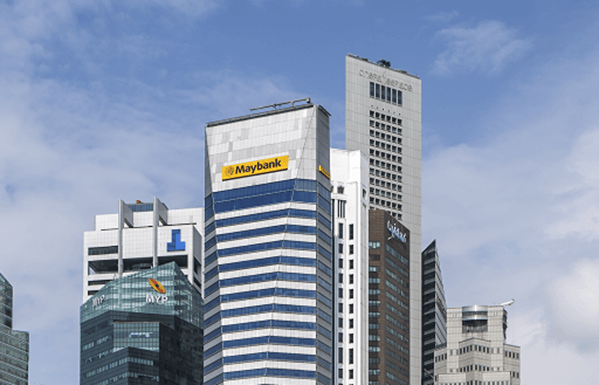Capitalism undergoes a seismic shift in values.
Companies are rethinking their approach to capitalism. With the threat of climate change intensifying and the pandemic bringing employee well-being to the fore, the "S" in ESG (environmental, social and governance) criteria has become as important as the "E" and the "G", of which many investors were already mindful.
This increased scrutiny of non-financial metrics is prompting businesses to consider their operations in more holistic manner, with sustainability and an inclusive approach to a far broader set of stakeholders at the heart.
Investors are encouraging the shift. In the first quarter of 2021, sustainable fund assets with binding ESG criteria grew by nearly a fifth to $2tn, according to Morningstar data cited in the Singapore ESG Compendium produced by Maybank's research arm, Maybank Investment Banking Group. Asia excluding Japan grew even faster, with product launches in several Asean nations and, given the low base, scope to expand further.
Doing good can also enhance returns. Maybank notes that companies in the top third of the ESG ratings table outperformed those in the bottom third - largely from earnings expansion - suggesting that the top ESG performers also better managed their financial risks. In light of what it believes will be a lasting trend, the broker has since mid-2020 provided ESG assessments for over half of the companies it covers in Asean.
Top level support for sustainability
Regulation is supportive of an increasingly rigorous approach to sustainability. Across the Asean bloc, rules have been introduced to encourage more sustainable investment, with standards from the Asean Capital Markets Forum to ratify bonds in the growing sustainable asset class. As part of its ACMF Vision 2025 plan endorsed by Asean finance ministers in March 2021, its strategic objectives put sustainability and inclusiveness at the core.
Bond issuance remains relatively small. According to a Climate Bonds Initiative report on the state of the Asean sustainable finance market, the stock of sustainability bonds in the region is less than $30bn, compared with $1.7tn globally. But this also presents opportunity - Thailand and Indonesia both experienced sizeable growth in issuance between 2019 and 2020.
The key role of banks

In its 2019 Sustainable Finance Report, the World Wide Fund for Nature highlighted the influential position of financial institutions in achieving sustainability outcomes, with more effort to be made in providing clarity regarding risk assessment and monitoring of clients.
Maybank, too, notes that banks face "multiple risks" from their lending activities, critical being contagion from client activities - especially in Asean, where high- carbon-emitting, or "brown", industry is more prevalent. It highlights that the increased focus on green financing and the development of sustainability frameworks by Singapore banks works to mitigate some of these risks.
Some banks are awake to their responsibilities in advancing the sustainability agenda. "The banking sector is in a position to drive a catalytic and impactful change, in partnership with relevant government agencies, towards responsible and sustainable financing," says Gregory Seow, head of Global Banking at Maybank Singapore and global head of the Financial Institutions Group at Maybank Group. "Financial intermediaries can collectively redirect funds and capital flows through the economy to where it is materially most impactful. I liken it to arteries for the heart."
Maybank has been proactive in developing a sustainability roadmap. In 2020 it devised its M25 five-year plan through consultation with key stakeholders, identifying sustainability strategic priorities from which stemmed four major commitments, including a pledge to improve the lives of 1m households across Asean.
This is already underway through programmes such as Reach Independence & Sustainable Enterprise (RISE), whose top 40 per cent of participants across Malaysia, Indonesia, the Philippines and Laos have seen incomes increase between 220 per cent and 680 per cent since the scheme's phased inception in 2014. In collaboration with the ASEAN Foundation, Maybank also runs the eMpowering Youths Across ASEAN programme that selects 100 young people from across the bloc to develop community projects.
Meanwhile in more mainstream financing, Maybank has made concrete commitments at the board level to eschew projects counter to its values and principles, for instance those that lead to deforestation or exploitation of people. By March 2021, the bank's funded loan exposure to ESG vulnerable sectors - namely palm oil, logging, mining, oil and gas, and coal - stood at just over 5 per cent of the total.
Besides avoiding these negatives, Maybank has also pledged to mobilise RM50bn for sustainable projects that integrate ESG criteria, such as renewable energy.
Internalising sustainability
For a financial institution to have an impact it cannot merely look to external influence, it must also embody sustainability goals. Here, too, Maybank has ambitious targets, gunning for carbon neutrality (Scope 1 and 2) by 2030 and net zero across all internal and financed operations by 2050.
It has also ensured that sustainability is embedded in its fabric, appointing a chief sustainability officer in March 2021 and establishing sustainability committees at the board and executive levels. Employees are encouraged to work on sustainability initiatives such as developing new products with ESG principles in mind.
Initiatives such as these will be essential for financial companies that seek to stay ahead as the imperative to meet sustainability goals becomes ever more urgent.
This content has been produced by Maybank in collaboration with the Commercial Department of The Financial Times.

 Linkedin
Linkedin Facebook
Facebook Email
Email Whatsapp
Whatsapp Telegram
Telegram
